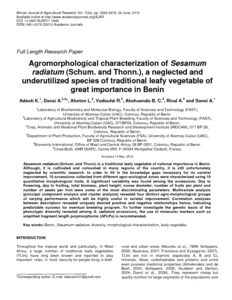Shieling Areas: Historical Grazing Pressures and Landscape Responses in Northern Iceland
Historical domestic livestock grazing in sensitive landscapes has commonly been regarded as a major cause of land degradation in Iceland. Shieling areas, where milking livestock were taken to pasture for the summer, represented one element of grazing management and in this paper we consider the extent to which historical shieling-based grazing pressure contributed to land degradation.






